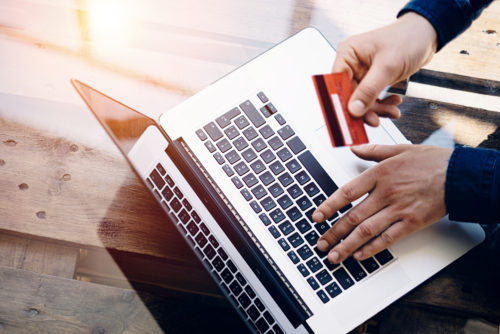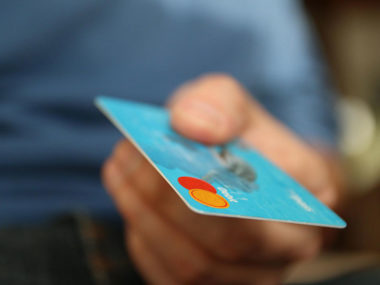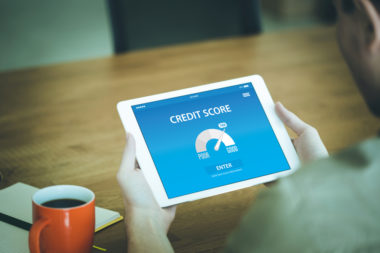Borrowing money is a necessary part of a healthy financial life. Not only can you use the funds for whatever you need, borrowing allows you to build trust with your current institution — which is a great way to secure your financial future.
Typically, when we think of borrowing money from a bank, credit union, or other financial institution, credit cards are the first thing to come to mind. However, credit cards are only one of several ways you can borrow money from a financial institution. Let’s explore one of these other options: an unsecured line of credit.
Table of Contents
What Is an Unsecured Line of Credit?
An unsecured line of credit (LOC) is a loan in which funds are lent without being backed by equally value collateral offered by the borrower. Generally, lines of credit are revolving and available funds will be regularly renewed, unlike a traditional loan which is given as a single sum.
While secured lines of credit are limited by the value of the collateral, unsecured LOC limits are determined by other factors such as the amount you request to borrow, your history as a debtor, income, credit score, and your debt-to-income ratio. This leaves the loaner at a much greater risk if the borrower defaults on their payments because the loaner cannot seize any assets to compensate for the default. Because of this, you usually need to have an excellent financial history to obtain an unsecured line of credit.
Credit cards are one of the most common ways you can open an unsecured line of credit. There is a set amount of money you can borrow and you don’t have to offer up any collateral if you miss payments. Making regular payments, however, is one of the benefits of an unsecured line of credit, as it is one of the ways you can build credit.
Unsecured lines of credit can also be secured through a bank account instead of through a credit card. For example, overdraft protection is a kind of LOC. If the borrower uses more funds than are available in their account, the bank will provide a line of credit to cover expenses to prevent checks from bouncing or payments from being missed until more funds are added to the account. Typically, you need to be pre-approved for or opt into overdraft protection before you can use it and you will have to pay the bank interest on the amount of money you borrowed.
Benefits of an Unsecured Personal Line of Credit
Unsecured lines of credit offer several key benefits that other loan options don’t. Some of the most enticing advantages include:
Flexible Repayment
Unlike most other kinds of loans, personal LOCs have more flexible repayment options. For example, a traditional loan typically involves a fixed payment due at the same time each month. Typically, an unsecured LOC will require you to make a small monthly payment with minimal interest.
Though the exact repayment plan will vary depending on your loan, most borrowers can choose to pay back the minimum amount due, pay off their entire balance, or pay off more than the borrowed amount. To maximize the benefits of an unsecured LOC, it’s best to pay off the entire balance to avoid accruing interest.
Diverse Payment Solutions
Another exciting benefit of LOCs is the variety of ways that you can pay them back. You may use cash, check, or even your credit card — whatever is most convenient for you. If you got your line of credit from a bank, you may be able to make a payment larger than the owed balance. Many larger institutions will allow this as it reduces the amount of interest you pay over the entire duration of the loan.
No Interest on Unused Credit
Unsecured LOCs only require you to pay interest on the funds you actually use. If you don’t use any or all of your loaned funds, you do not have to make a payment or pay any interest. This can help keep the cost of your LOC down, even though they often have somewhat high interest rates.
Drawbacks of Unsecured Lines of Credit
Though there are many benefits to an unsecured line of credit, there are also a few drawbacks. Consider the following before you go to open your personal LOC:
Lower Credit Limits
Unsecured LOCs often have lower credit limits than other kinds of loans; many institutions will have a limit of just a few thousand dollars. Instead of using collateral to determine the amount loaned, banks will look at your personal financial history and will typically only lend to highly reputable candidates.
Banks may also look at other factors to decide the limit of an unsecured LOC. For example, home equity lines of credit (HELOCs) often have higher limits than credit cards. The value of the property provides security similar to that of collateral.
This lower limit helps protect the bank if the borrower defaults on their payments; instead of losing out on a significant amount of money, they will only lose a small sum. You may be able to get a higher credit limit simply by asking, but you will need to persuade them that you are low-risk. A strong credit score and a history of not defaulting on payments are a great way to demonstrate that. Showing that you have other assets, such as a savings or CD account, can be helpful as well. However, if you need significant funding, it may be better to look into other loan options.
Harder to Get Approved
Many borrowers may struggle to get approved for an unsecured line of credit because they are so risky for banks. Individuals usually need outstanding credit scores and a history of repaying their debts. Other factors, such as current income and employment status, can also have an affect on whether you are approved for an unsecured LOC or not.
Potentially Higher Interest Rates
Compared to other forms of loans, unsecured lines of credit are more likely to have high interest rates. This is another way the lender can protect themselves from borrowers defaulting on their payments. Collateral, which is not put up against a LOC, adds lender security. Higher interest rates can help make the loan more secure for the lender in its absence.
Regardless of the pros and cons of opening an unsecured line of credit, your own needs will help you determine if it’s the right choice for you. By understanding the difference between an unsecured and secured LOC, and how they compare to other kinds of loans, you can make a more informed decision about your financial future.
Image Source: https://depositphotos.com/




